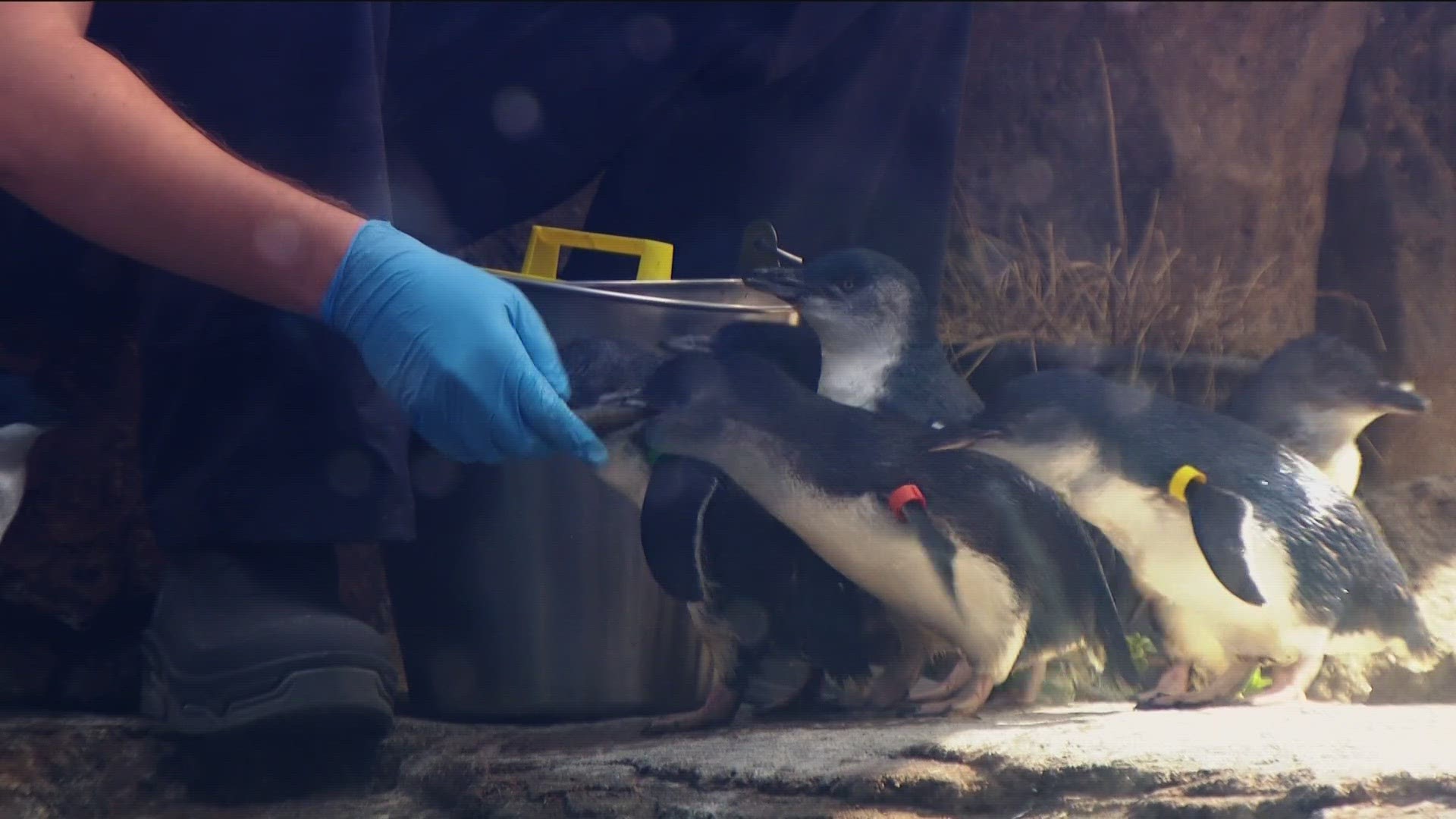SAN DIEGO — The Birch Aquarium, which has been reaching the gold standard in zoos and aquariums for 25 years, is home to a huge variety of sea creatures that seem to captivate people of all ages. It’s their diversity that has helped them add to populations of species that are in danger.
Let’s start with the little blue penguins, fan favorites among Birch-goers.
An announcer tells the crowd, “They weigh about 3 lbs. and digesting your food takes a lot of energy.”
The onlookers may notice the penguins are shivering a bit and that’s because when they eat cold fish, their bodies get chilly. You’ll often see them bask in the sun after a meal to warm up.
"They’re so tiny and cute. They’re about the size of a football or giant burrito," said Leslee Matsushige a longtime associate curator at Birch Aquarium.
Birch is the only aquarium on the West Coast to have little blue penguins and now the only one to have babies. Three of them hatched already this year, with the first on New Year’s Day.
“We weren’t quite sure it was going to happen, it was a surprise,” Matsushige explained. "We did acquire five more penguins in the fall and that brought excitement to the penguins so then we got the breeding activity.”
The babies start off tiny and fuzzy, then their down feathers go away over a few weeks’ time. That’s when they’re able to dive in the water and swim with the rest of their buddies, shining in their blue hue, “they swim around and bubbles are flying, they look like they’re flying underwater.”
They can go speeds of about 3-4 miles an hour. And while their behavior is impressive and adorable, they’re also serving a greater purpose. Their numbers are declining due to climate change and human development.
“They live in a threatened environment, so we need to learn about them and care for them and have successful breeding,” said Matsushige.
From the active little blues to the not so fast, but just as captivating, sunflower sea stars. They are another example of breeding at Birch.
The sunflower sea stars are critically endangered. Teams from Birch and other marine life experts including the San Diego Zoo Wildlife Alliance were able to successfully spawn and cross-fertilize gametes from a male and a female, resulting in fertile eggs. This is a sign that aquariums like Birch can help save species from extinction.
Sunflower stars have been hit hard. More than five billion have died from sea star wasting disease sweeping the West Coast. They’re critical to keeping the sea urchin population from taking over and destroying kelp forests and are vital to the balance of the oceans.
Another project near and dear to Matsushige’s heart would be the breeding of the weedy sea dragons.
You may recall a very pregnant reporter having a heart-to-heart with a very pregnant male weedy sea dragon. That was in February 2023 when for the first time, a weedy sea dragon got pregnant and successfully had babies in an aquarium.
The babies are almost a year old now. They can grow about a centimeter per week. And thanks to them being born at Birch, a new discovery was made. The babies have a bright orange color to them when looked at through a yellow lens. So, they can see each other but other fish, or predators, cannot.
They have so many now, that they’ll be sharing them with other aquariums to help with their diversity, “we have more than we can even handle keeping here that’s why we’re sharing them.”
A huge feat, especially considering when Matsushige first started at Birch in the 1990’s, there was only one sea dragon. In her 32 years, she’s played a role in many firsts.
Helping with breeding and repopulating is proof to her that these animals are in environments where they can peacefully and successfully contribute to the recovery of their species.
You can watch the penguins on Birch’s penguin cam here: Https://aquarium.ucsd.edu/cams/penguin-cam
Watch Related: Male Weedy Seadragon at Birch Aquarium carrying around 70 eggs (Feb 28, 2023)

